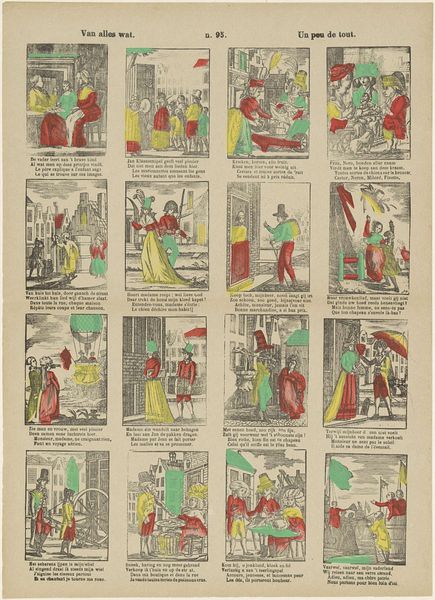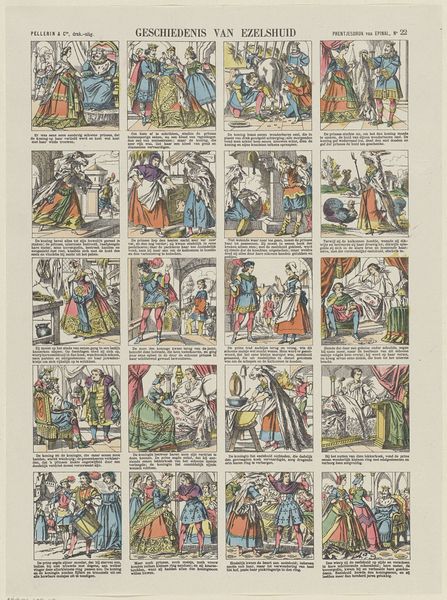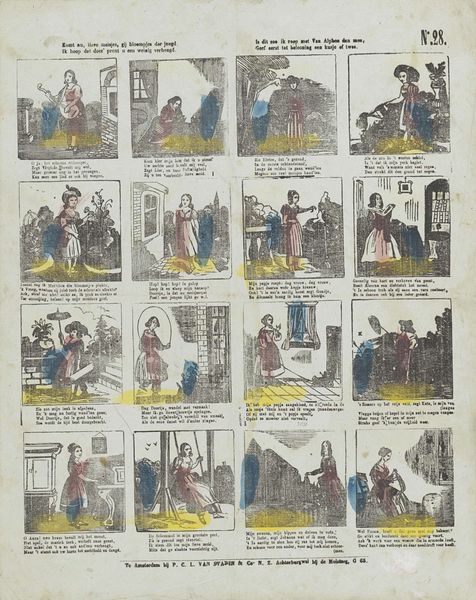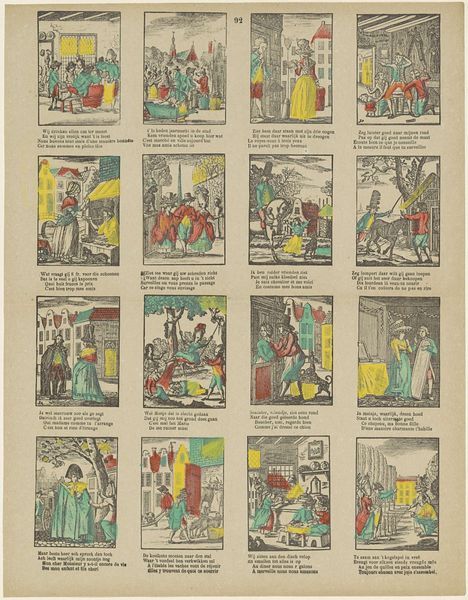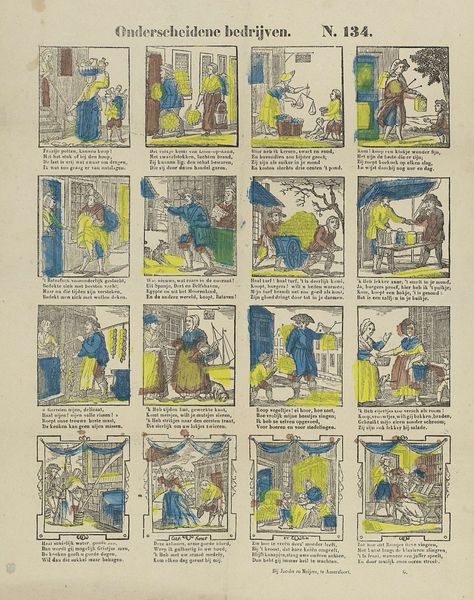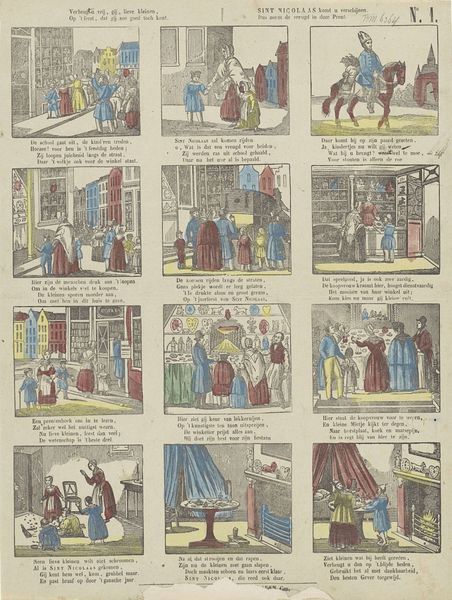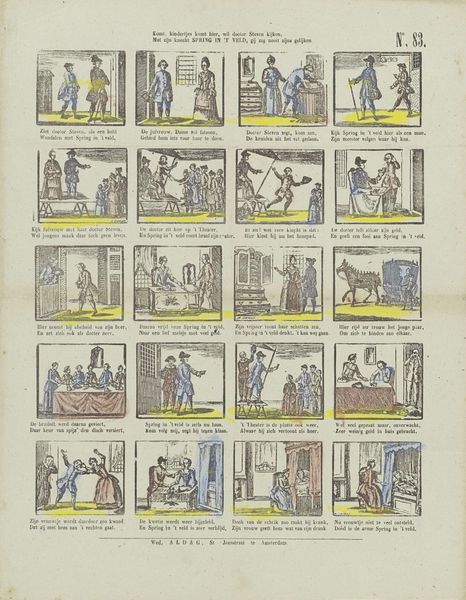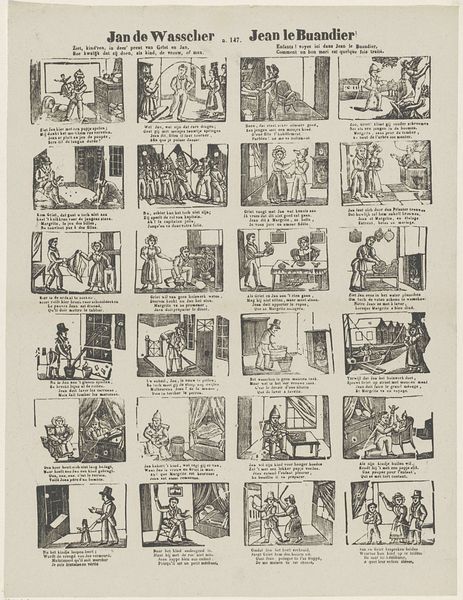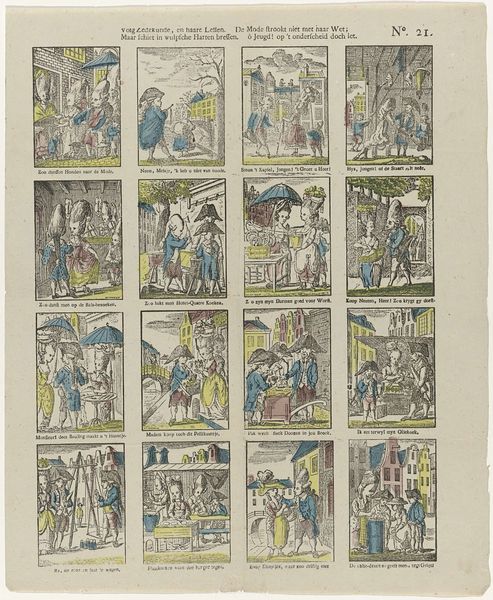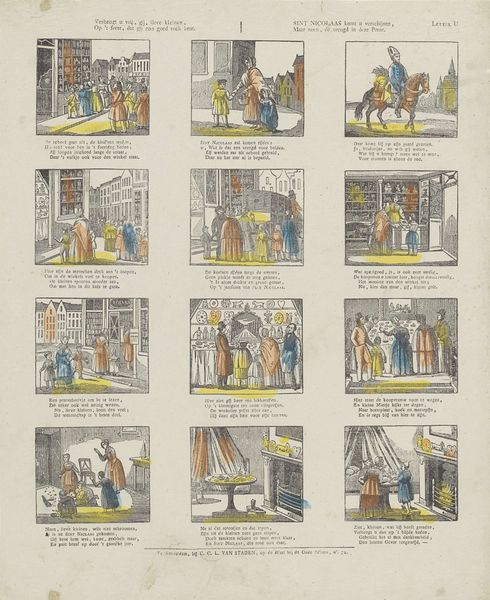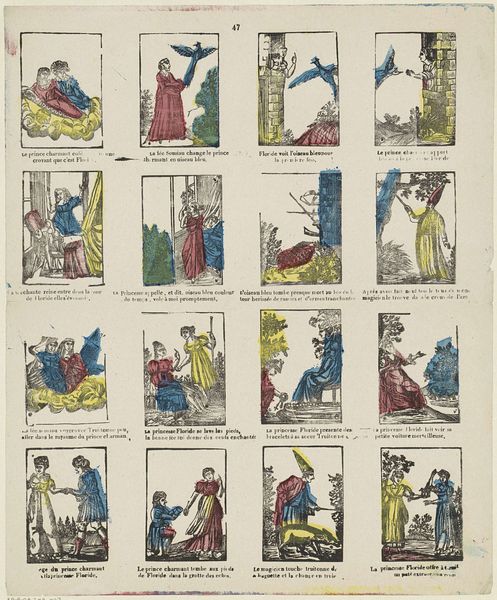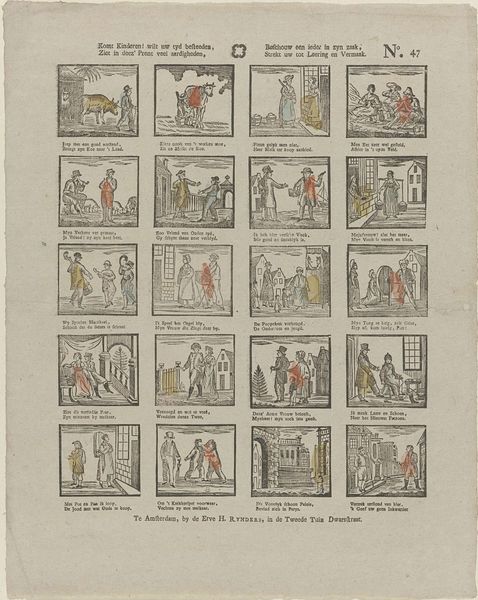
Ziet, lieve kind'ren! in deez' prent, een reeks versgeidenheden, / Hier wordt het krijgsbedrijf vertoond en 's landmans werk en zeden 1850 - 1870
0:00
0:00
print, engraving
#
narrative-art
# print
#
genre-painting
#
engraving
Dimensions: height 371 mm, width 297 mm
Copyright: Rijks Museum: Open Domain
Editor: Here we have "Ziet, lieve kind'ren! in deez' prent, een reeks verscheidenheden, / Hier wordt het krijgsbedrijf vertoond en 's landmans werk en zeden" by Willem Bal, an engraving printed sometime between 1850 and 1870. It's like a comic strip but with little captions! I'm struck by how it tries to capture so much about daily life, the military and rural scenes all in one print. What does it tell us about the culture that produced it? Curator: This print gives us a fascinating glimpse into 19th-century Dutch society. It presents the "krijgsbedrijf," the military life, alongside "s' landmans werk en zeden," the farmer's work and customs. Think about this pairing for a moment. What does it tell us about the values being promoted at the time? How does showing the army *alongside* the farmer idealize both in the broader project of nation-building? Editor: So, the military and the farmer were seen as equally important pillars of Dutch society? Almost like two sides of the same coin? Curator: Precisely! This print normalizes both. We see a distinct visual hierarchy; neither subject dominates which invites viewers to imagine those spheres as fundamental—possibly reflecting emerging nationalist sentiment, which emphasized unity and common identity. Consider who the intended audience was meant to be— children! It suggests an intentional indoctrination by presenting these roles in relation to one another, encouraging those ideals to grow within the minds of youths. Editor: That makes so much sense! I hadn’t thought about the intended young audience. I see it as social commentary presented through imagery and how important the messaging is. Curator: Exactly! Recognizing these subtleties challenges us to understand how visual narratives have, and continue, to shape collective memory, identity and cultural values.
Comments
No comments
Be the first to comment and join the conversation on the ultimate creative platform.

